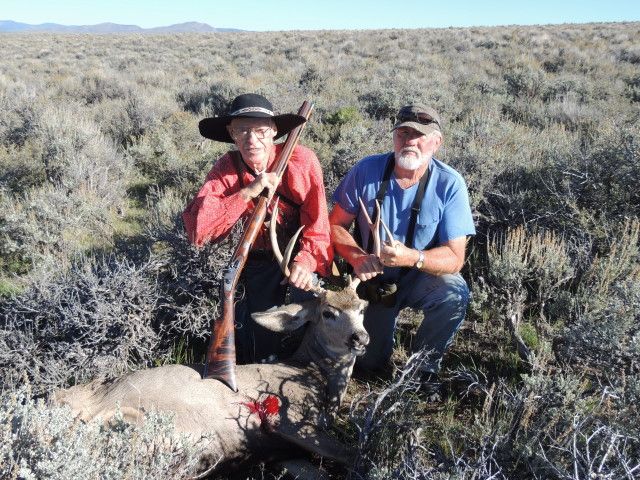Lets recap. We have a moderator that is belittling you for not posting info that you had already posted. That's not surprising. :td:
You received several internet necropsies that are trying to figure out why the ball FAILED to penetrate and leave a second hole. Some quite elaborate. :applause:
You have also had meteorologists that have told you that your wet load might have been a problem. :idunno:
Then there is the load necropsies. they want the proof of the ball then they can decipher the load problem in reverse, all the way back to the last breath you took. :rotf:
Most are not going to like to hear what I say but here it goes.
Not getting complete penetration on this type of shot ( a perfect one ) is a failure of sorts. Yes the animal died and all is well. But if that bullet would have hit the shoulder I doubt this would have ended on a happy note.
You are a bow hunter. I am sure that you have heard that even bow and arrow combos are rated for Foot pounds of energy even though it is the broadhead that cuts that does the damage. No the energy doesn't wipe the animal out like it does with a 7 mag, but the energy is still there, and it drives the arrow in. The more energy you have the deeper it drives. Muzzleloader bullets are no different. No matter how the round ball shooters try to candy coat it energy does indeed kill. Everything that moves has energy. As archery hunters we are taught, and learn that two holes are better than one, better blood trail. I will back that up and say that two holes are indeed better than one with a muzzleloader too. :thumbsup:
A bullet that is under the skin barely got there. the bullet that bounces across the prairie got there and left it's mark,, the second hole.
The fact is that muzzleloader bullets do impact with and transfer energy. I have seen this with my own eyes. I have seen a lot of animals hit with a 460 gr conical. The skin dishes in, the animal steps sideways hair fly's in the air. Deer sometimes kick at that point some don't. Elk absorb more energy from the load than thinner skinned more lightly framed animals because of their size. But because of their size it takes more to put them down.
I don't like PRB's. If others do that is fine with me. If you like PRB's over conicals that is also fine by me. But if you want to hear what I think caused the problem read farther. :stir:
You used a Hornady PRB. Hornady's are butter soft. It is common knowledge that pure lead is 5 BHN. But my tester can measure hardness to a much finer degree. I have personally tested Hornady PRB, and conicals, CVA balls, and speer balls. I have tested a lot of lead from other bullets and other sources. Again the hornady balls are super soft. The Great Plains bullets are also just a bit harder than the grease that is on them. The other manufactures are about the same but a pinch harder. A pinch goes a long way with hardness. I have spent years testing my bullets for hardness, accuracy, and affect on game.
So what happened, why didn't it blow through? I don't know. But my first question to the guys that are getting full penetration is how hard is the lead? Were your balls homemade? If so how hard was the lead and what type of lead were they made out of? I have seen round ball hardness change from box to box that I have tested, even from the same company.
Roof flashing lead is a different hardness than pipes. Pipes are different than stick on wheel weights. Dental lead is different yet, MUCH HARDER.
A whitetail doe is not a formidable opponent for a muzzleloader bullet. The lack of a perfect shot not exiting is bothersome to me. I would not like that one bit. Ron





